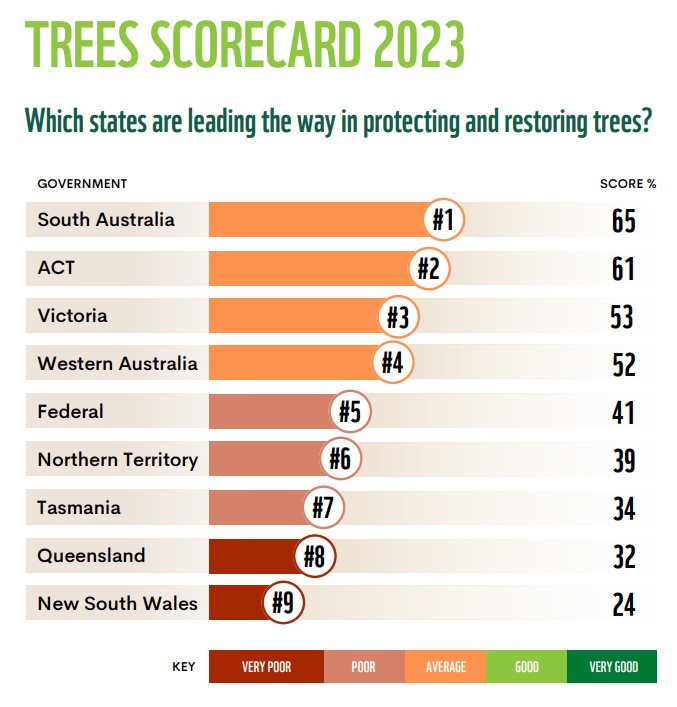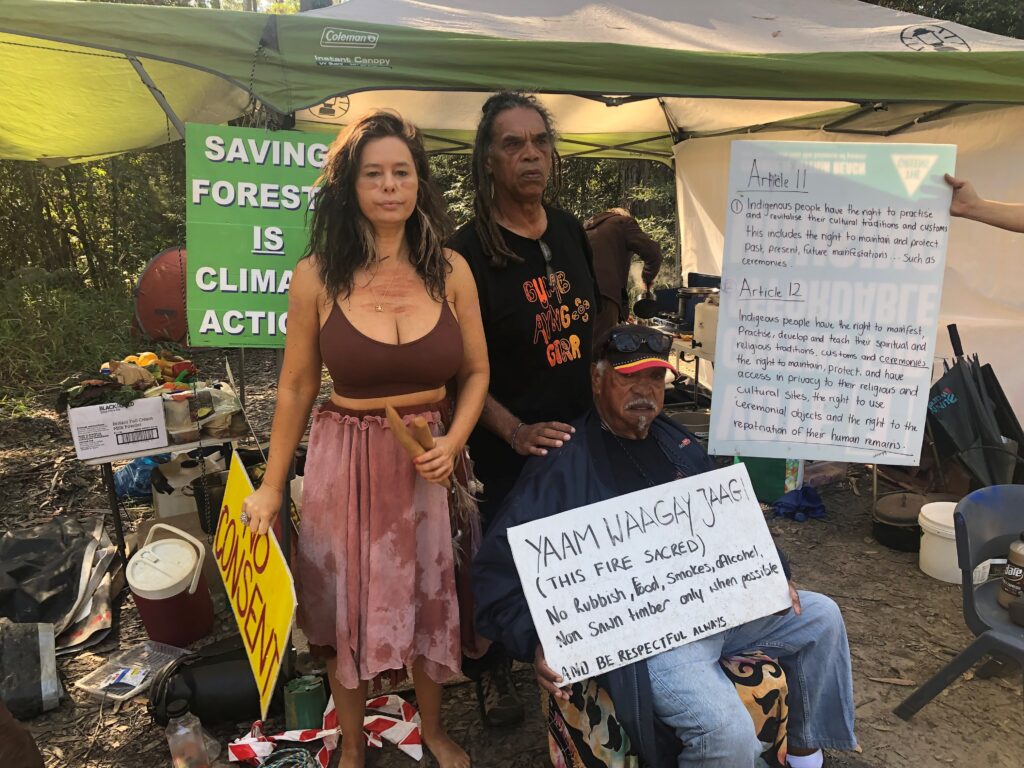Australia should be a leader in protecting and restoring trees, but currently, we’re the only developed nation on the list of global deforestation fronts so WWF Australia has produced the first Trees Scorecard with the hope of pushing state and federal governments into action.

“We all need trees to survive, so it’s imperative that we take action now to save our forests,” says WWF Australia on the release of its first Trees Scorecard.
The first Trees Scorecard presents an overview of how state, territory and federal governments are performing in tree protection and restoration.
NSW and Queensland sit at the bottom of the leaderboard, with South Australia placing first.
“With one tree bulldozed in Australia every second, there are plenty of opportunities for our country to do better to save trees,” WWF Australia says.
“The Scorecard assesses each jurisdiction’s performance in ending both native forest logging and land clearing, as these are the main drivers of forest loss.
“It shines a light on where governments are standing tall and where governments must do more to protect these precious natural assets.
“No government received a score above ‘Average’ showing there is plenty of opportunity for all governments to take action and become leaders in restoring and protecting trees.
- Standing tall in first place on the leaderboard is South Australia (SA), with no native forest logging, strong commitments, and a range of conservation programs.
- Landing next was the Australian Capital Territory (ACT), Victoria (VIC) and Western Australia (WA). These three jurisdictions all received an ’Average’ score, showing that while we all have work to do, there has also been progress.
- The recent announcement of an end to native forest logging in VIC has provided a welcome boost to VIC’s score.
- The Australian Federal Government (Federal Government), Northern Territory (NT) and Tasmania all placed midway with ’Poor’, but for different reasons.
- New South Wales (NSW) and Queensland (QLD) sit at the bottom of the leaderboard, both scoring ‘Very Poor’ with opportunities for both states to increase their rank with the right type of commitment and action.
WWF Australia thanked the Environmental Defender’s Office (EDO) for their comprehensive analysis that informed the scoring for the commitment and land clearing indicators and Frontier Economics for their comprehensive analysis that informed the scoring for the native forest logging indicators and Barraband Consulting, 11 Butterflies, Acacia Consulting, Australian National University and Kuril and Currawong Consulting, which also contributed expertise to assist in developing the Scorecard.
“This scorecard assesses and scores a range of factors that are important to Australia shifting from a global deforestation hotspot to a reforestation nation by becoming a world leader in tree protection and restoration.
“We’re calling on our leaders to take Australia from a deforestation hotspot to a reforestation nation by becoming a world leader in protecting and restoring trees.
“In doing so, Australia can be a beacon of hope for the world – a nation that not only protects and preserves its trees, but also leads the way in sustainable tree management and conservation.
“This leadership would see Australia recover our unique biodiversity and ecosystems and achieve net-zero carbon emissions.
It would support a thriving and world-class ecotourism industry and provide opportunities for First Nations Peoples to connect with Country. It would help restore and protect our agricultural landscapes to make them more productive, competitive, sustainable, and resilient into the future.
“In 2021, Australia, along with more than 100 other countries, signed an agreement called the Glasgow Leaders’ Declaration on Forests and Land Use at the 26th United Nations Climate Change Conference of Parties (COP26) to end deforestation by 2030.
“The time is now for Australia to act on this commitment and become a leader in protecting and restoring trees to address the global crises of mass species extinctions and climate change.
“Only 52 per cent of Australia’s forests and woodlands remain intact. Deforestation continues at a globally significant rate. In the time it takes to read this sentence, 20 Australian native trees will have been cut down or damaged— that’s almost two trees lost every second, 93 lost each minute, 50 million lost every year.
“The ongoing rate of forest loss sees eastern Australia listed as one of 24 global deforestation fronts, alongside the Brazilian Amazon, the Congo Basin and Indonesian Borneo.
“It’s estimated that over 70 million animals are killed each year from deforestation across Australia.
“Not even Australia’s most loved animals, such as koalas, greater gliders, swift parrots, numbats and quolls, are spared.
“It’s no surprise Australia has the worst mammal extinction rate of any country in the world.
“Preserving our trees and keeping our forests intact is critical to maintaining the health of our planet and vital for a sustainable future.
“Not only do trees provide habitats for countless species of wildlife, but they also play a crucial role in mitigating climate change and provide a wealth of ecosystem services essential for our well-being and economic prosperity and provide connection to Country for First Nations People.
“The worsening droughts and bushfires of the past two decades show the terrible impacts of global heating on forests, and the role of forests as a nature[1]based solution to stopping dangerous climate change.
“It is government’s role to provide the policy settings, data, standards, and incentivise private sector action and investment into forest conservation and restoration.
“This Trees Scorecard is designed to benchmark and advance Australia towards the goal of the Glasgow Declaration to halt and reverse forest loss and hold Australia to account to deliver on this commitment.
“Knowing how much land clearing is happening each year sounds simple enough, but Australia is unable to consistently report on land clearing in an accurate, transparent, and timely manner.
“The only national data is the National Carbon Accounting System (NCAS), yet this data is highly inaccurate when compared with Australian states that have more accurate monitoring systems, such as QLD and NSW.
“From financial year (FY) 2018 to 2020, land clearing reported for Australia was 810,377 hectares. “However, land clearing for QLD (just one out of nine jurisdictions) for the same period was almost double at 1,491,344 hectares.
“How can land clearing from one state be almost double the national total? The answer: NCAS is highly inaccurate and substantially underestimates land clearing.
“Alarmingly, this inaccurate data is used when Australia reports on emissions under the United Nations Framework Convention on Climate Change.
“WWF-Australia has formed a collaboration with the Wentworth Group of Concerned Scientists and external remote sensing experts to develop a national vegetation change monitoring method and product.
“WWF-Australia hopes that this will lead to the Federal Government establishing a national deforestation and reforestation monitoring and reporting program to provide an accurate picture of land clearing and emissions for Australia. Otherwise, we are just flying blind.”
For more information and to support WWF Australia’s efforts visit The Trees Scorecard | The Trees Scorecard | WWF Australia


